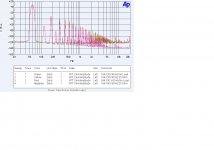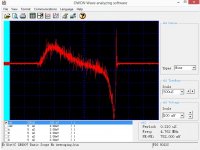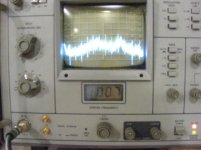Haha.OOPS! I was referring to the power transformer screen. If you connect it to safety ground that actually brings in noise. Same to the grounded power conductor.
So leave the screen floating ?...that's a new one to me.
Are you saying that connecting the screen to PE or N will inject already present PE or N noise into the secondaries ?.
Dan.
Haha.
So leave the screen floating ?...that's a new one to me.
Are you saying that connecting the screen to PE or N will inject already present PE or N noise into the secondaries ?.
Dan.
When I made measurements the effect was there if a screen was present. Connecting it to the outside world raised the noise pass through.
Note the screen acts as a capacitor to ground and as a bit of a Faraday shield.
Does anyone know anyone who is positively excited about the IoT, other than chipmakers, or some ambitious crowdfunding folk?
Internet of tomatoes
IoT: The Internet of Tomatoes | Analog Devices
Sort of surprising, without having tried the experiment.When I made measurements the effect was there if a screen was present. Connecting it to the outside world raised the noise pass through.
Yeah, that's what I was sayin.....primary HF junk capacitively couples to the screen and this junk energy is conducted onto the PE/audio ground line causing more HF noise on the system ground.Note the screen acts as a capacitor to ground and as a bit of a Faraday shield.
My reasoning for connecting the screen to N is to keep it close to MEN earth....how close that is depends on the load current/load noise on that circuit.....the N connection will be higher in noise magnitude than the PE connection, hmmm what to do.
IIRC theory lessons bludgeoned into me that leaving the screen OC would increase the primary to secondary HF noise capacitive coupling ?.
Does the screen actually constitute an infinitely distributed/divided capacitance across the length of the primary winding for toroidal transformer ?.
Did you look at voltage/waveforms on the OC screen, and what changes with variable loading to N or PE ?.
Dan.
Last edited:
In my house I monitor the temperature of each room, the humidity in seven places inside and one outside along with the outside temperature. Gas monitoring includes carbon monoxide and flammable gas sensing in three places.
This not only allows me to keep the inside comfortable by using outside air to heat, cool or even maintain comfortable humidity, it also clears the air near the porcelain throne.
The added benefit is that it warns of dangers such as incomplete combustion, natural gas leaks or failure to ignite and my favorite... roof leaks.
Now some may remember the commercials about smart refrigerators that tell you when you are out of a staple and give recipes based on ingredients on hand. Not my idea of a useful wired home.
BTY the still manual control is shutting off electricity and water when I am gone. Also shutting off the water if there is a leak.
Now what is the cost savings if my gizmos detect a roof leak before the ceiling is damaged?
Dan,
It has been a while. I was looking at FFTs. Any wire to ground is just too long to really do much good. Now if you want to put in a ground grid with 1" wire braid from the transformer shield, that might be interesting, but still silly, as it would also increase the capacitively coupled noise current.
Like I mentioned try it, can't hurt.
Last edited:
The screens each have their own wire connecting to a single plug in the wall socket, so the screen current does have some minor RL separation from the system ground.It has been a while. I was looking at FFTs. Any wire to ground is just too long to really do much good. Now if you want to put in a ground grid with 1" wire braid from the transformer shield, that might be interesting, but still silly, as it would also increase the capacitively coupled noise current.
Like I mentioned try it, can't hurt.
I can try running the screens OC, or connected to N at the wall socket perfectly painlessly in this case....food for fun, thanks.
Dan.
Ah yes, connected with the good old Quantum Clip ...
Amazing!
And for headshell
Walker Audio Black Diamond Crystal for Cartridges
And emi, rfi problems solved!
Ground wire which inject noise in audio gears is NOT ground wire, it is fake ground wire ...simply bad grounding.
IMO, trere is no room for discussion about injected noise in some wire, or strip, which imitate ground wire, and leave noise jumping arround like rabbit family.
And, also, making bad conclusion from such bad behavior.
In my house I monitor the temperature of each room, the humidity in seven places inside and one outside along with the outside temperature. Gas monitoring includes carbon monoxide and flammable gas sensing in three places.
This not only allows me to keep the inside comfortable by using outside air to heat, cool or even maintain comfortable humidity, it also clears the air near the porcelain throne.
The added benefit is that it warns of dangers such as incomplete combustion, natural gas leaks or failure to ignite and my favorite... roof leaks.
I live in a nice temperate zone where you open the windows if too warm and light a fire if too cold. CO sensors by boiler and fireplace that bleat as no need to log it. Cheap and simples. But its a rental. Combustion monitoring on a furnace should be integrated to the furnace IMO. Although I do have wideband lambda sensors if required
capacitively coupled noise current.
ahem...
Capacitively coupled noise voltage....
Noise current is inductively coupled...
John
Now, if that ain't nitpickin.....
I live in a nice temperate zone where you open the windows if too warm and light a fire if too cold. CO sensors by boiler and fireplace that bleat as no need to log it. Cheap and simples. But its a rental. Combustion monitoring on a furnace should be integrated to the furnace IMO. Although I do have wideband lambda sensors if required
I think CO2 sensors are mandatory on all UK new builds for the last 15 or 20 years. All rental properties have to have them no matter what the age and have any gas boilers serviced regularly. If a tenant dies due to CO2, the landlord is in deep do-do.
I'm all electric with heat x-changer - no CO2 worries in my house and I have found its quite efficient as well. Its a fairly substantial new house and I am paying less than I did on electric+gas in my previous UK house (I lived there up until 2006 before going to Asia).
I don't need no IoT in my house . . . but will have to comply of course when the smart meter roll out hits town in the next few years.
Last edited:
Yes one smoke alarm in my apartment was changed to a combination smoke and CO detector.
As far as other needs, I used a bit of electrical heat on a couple of cold days in the winter, and to heat the bathroom when I shower. I stopped using the inefficient window A/C a couple of years ago, and have a portable for the one bedroom which is used sparingly in the hottest nights.
But this is southern California, and my living/working area faces west so heats up in the afternoon.
When upstairs overflowed their tub and the water was pouring down from my ceiling, I was here to hear it and notify management. If the roof leaks upstairs will know of it first.
It's spartan, and yet reasonably cheap and much of the square footage is deductible as a business expense. One client visited with his wife one day. Such visits are rare. At one point she asked me if I actually lived here
As far as other needs, I used a bit of electrical heat on a couple of cold days in the winter, and to heat the bathroom when I shower. I stopped using the inefficient window A/C a couple of years ago, and have a portable for the one bedroom which is used sparingly in the hottest nights.
But this is southern California, and my living/working area faces west so heats up in the afternoon.
When upstairs overflowed their tub and the water was pouring down from my ceiling, I was here to hear it and notify management. If the roof leaks upstairs will know of it first.
It's spartan, and yet reasonably cheap and much of the square footage is deductible as a business expense. One client visited with his wife one day. Such visits are rare. At one point she asked me if I actually lived here
ahem...
Capacitively coupled noise voltage....
Noise current is inductively coupled...
John
Now, if that ain't nitpickin.....
Is current the charge moving or THE charge moving?
I hope serious designers learn something from this exchange. Transformers can be problematic! Yet, many think that making a successful power supply is easy and obvious. The same thing happens with diodes.
When we first switched out vacuum tube rectifiers and replaced them with solid state diodes, we found them sounding worse, YET the solid state device had every obvious advantage. Many switched back to vacuum tube rectifiers for their tube preamps and even power amps, because of the subjective difference. We now know that it is the inherent 'slowness' of the solid state diode that is usually put into the 4 diode blocks that we use for power transistor amplifiers (and preamplifiers) that is the problem, and that we can use fast (but soft recovery) power diodes in their place and improve the sound quality. Or we might go out of our way to improve the existing rectifier bridges with added parts. In any case, we walked into this blindly decades ago, and wondered what was wrong, until it was fixed by the above methods. Of course, many here probably could care less to even find out if there is a difference, and so it goes! '-)
When we first switched out vacuum tube rectifiers and replaced them with solid state diodes, we found them sounding worse, YET the solid state device had every obvious advantage. Many switched back to vacuum tube rectifiers for their tube preamps and even power amps, because of the subjective difference. We now know that it is the inherent 'slowness' of the solid state diode that is usually put into the 4 diode blocks that we use for power transistor amplifiers (and preamplifiers) that is the problem, and that we can use fast (but soft recovery) power diodes in their place and improve the sound quality. Or we might go out of our way to improve the existing rectifier bridges with added parts. In any case, we walked into this blindly decades ago, and wondered what was wrong, until it was fixed by the above methods. Of course, many here probably could care less to even find out if there is a difference, and so it goes! '-)
Well first is a transformer passing noise that seems to drop at HF when loaded by just a 25 ohm resistor compared to unloaded. I suspect that is because it is capacitivly coupled by interwinding capacitance.
Then a 1N4004 diode current showing switch on and off spikes. If you look at Mark J.s bit on transformer ringing, he show ringing with all diodes including Schotky's which do not have turn off noise. My OPINION is that turn on noise also contributes to ringing which is just one rectifier issue.
Third up shows when you put capacitors across the rectifier diodes you let in more line noise.
Then a 1N4004 diode current showing switch on and off spikes. If you look at Mark J.s bit on transformer ringing, he show ringing with all diodes including Schotky's which do not have turn off noise. My OPINION is that turn on noise also contributes to ringing which is just one rectifier issue.
Third up shows when you put capacitors across the rectifier diodes you let in more line noise.
Attachments
Last edited:
- Status
- Not open for further replies.
- Home
- Member Areas
- The Lounge
- John Curl's Blowtorch preamplifier part II


